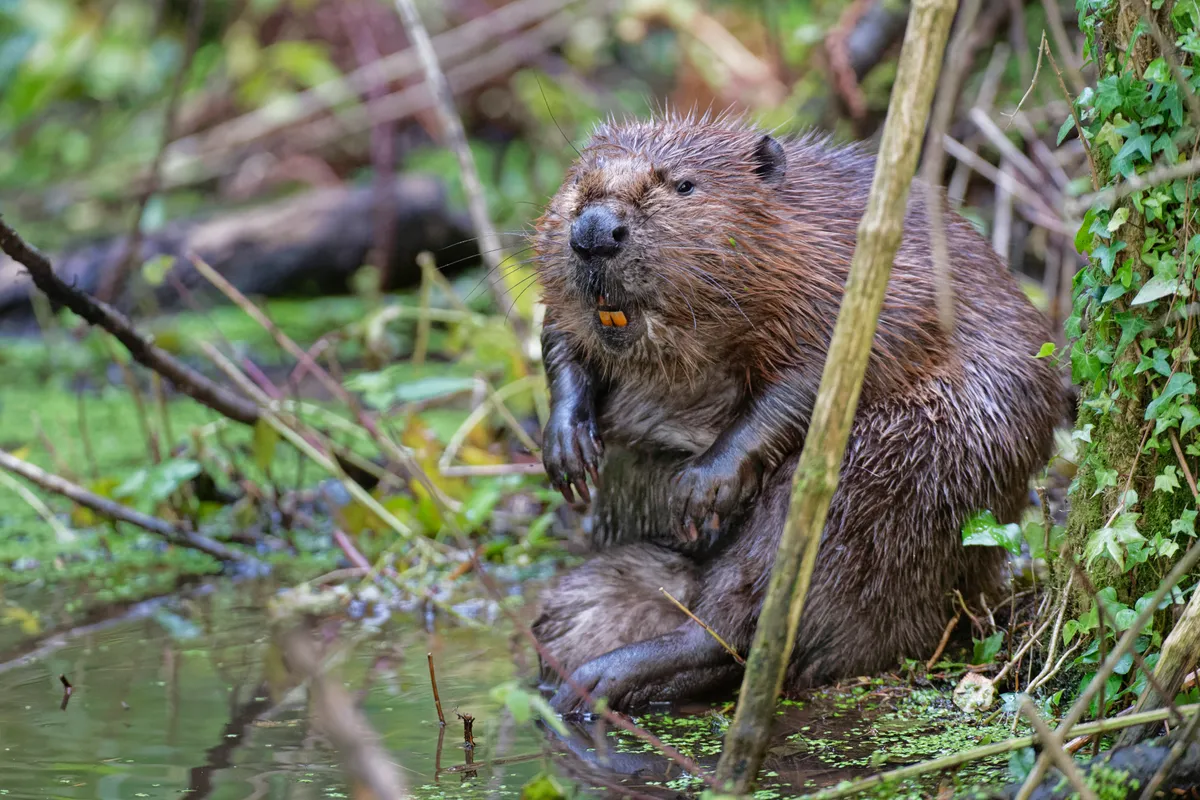A static camera in the beaver enclosure at the National Trust's Holnicote Estate has captured a six-week-old kit swimming with the adult female, confirming the suspicions of staff there.
“We first had an inkling that our pair of beavers had mated successfully when the male started being a lot more active building and dragging wood and vegetation around the site in late spring,” says Jack Siviter, a ranger at the Holnicote Estate.
“The female also changed her usual habits, and stayed out of sight, leaving the male to work alone. It was then several weeks until we spotted her again, and this is when our suspicions were confirmed that she had given birth, due to having very visible teats.”
The National Trust invited the public to vote for their favourite name in a shortlist, and the winning name was ‘Rashford’ after the England football player, Marcus Rashford.
The male and female beaver were first released into the enclosure roughly 18 months ago in January 2020, and have since been very busy changing the landscape as they've been felling trees to create a dam and a family lodge, which have also caused pools to form.

The change in the landscape caused by the beavers has increased the biodiversity of the area, attracting a range of wildlife including amphibians, otters and kingfishers. In addition, the dams and pools are filtering and slowing the water, which will help to reduce flooding downstream and reduce the impact of droughts, both of which are forecast to become more frequent with climate change.
“The transformation of the habitat has been remarkable. To go from dry unmanaged woodland to a more open wetland complex in such a short time has not only boosted the variety of wildlife that we’re seeing on the estate, but also numbers,” says Ben Eardley, project manager for the National Trust at Holnicote.
“This is really important because the beaver are doing a lot of what we want to see in terms of conservation and land management. They are letting the light and the water into the site, helping natural processes and providing opportunities for a host of other wildlife.”


The beaver kit makes history as the first beaver to be born on Exmoor in 400 years, and the first one to be born on National Trust land. It will stay with its parents for two years before it will want to establish its own territory, at which point the National Trust hope to relocate to either another enclosure or, if regulations allow at the time, to release it into the wild.
“We are particularly pleased for our female, nicknamed Grylls due to her survival instincts, as she didn’t have the easiest start to life being orphaned at an early age,” adds Jack. “As a first time mum she seems to be thriving and it’s great to see her with her new kit.”
